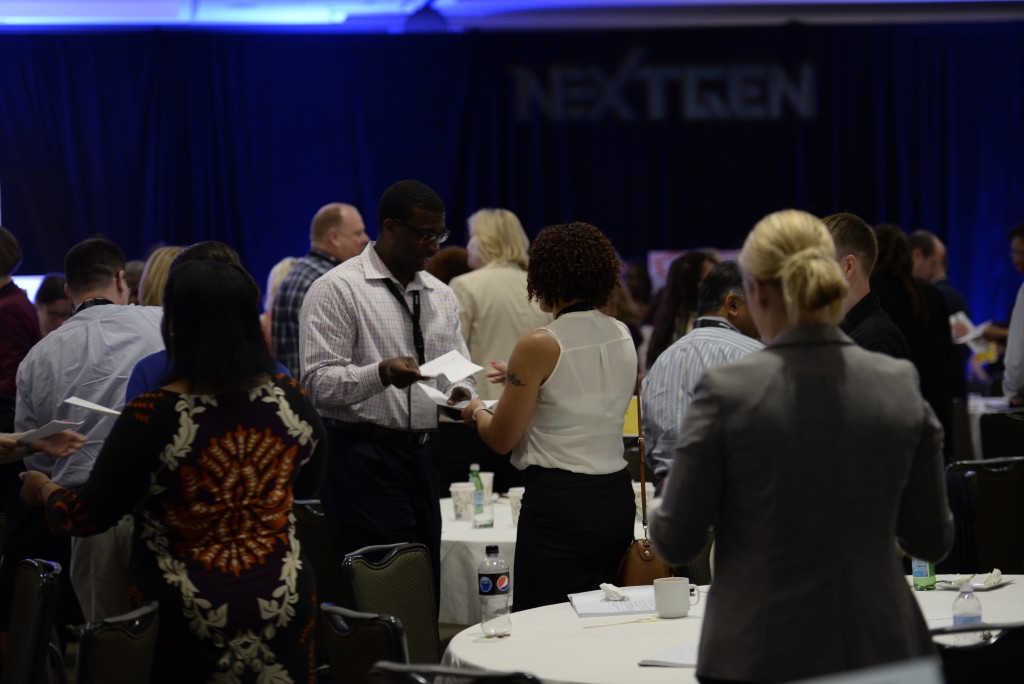Inspiring and guiding innovation at your agency can be a major challenge. Government may not be as slow paced and static as some people think, but there are often still numerous barriers that prevent new philosophies and approaches from being adopted. Unfortunately, this sometimes means that great ideas go nowhere, and that agencies continue to rely on the same inefficient policies.
Fortunately, many departments are already working to promote creative thinking and inventiveness amongst their employees. Innovating is hard work, and it’s easy to get tripped up in the process. To ensure agency progress, it is incredibly important to adopt methods that support an open and supportive environment for brainstorming and collaboration.
In a lighting keynote session at the Next Generation of Government Training Summit, Josh Marcuse, Senior Advisor for Policy Innovation in the Office of the Secretary of Defense in the Department of Defense, demonstrated one tactic to combine brainstorming and teamwork into a successful and effective method to innovate new policies.
To try Marcuse’s approach, call an agency meeting to brainstorm, and follow these steps:
- Ask everyone in attendance to fold a piece of paper in half. On the outside, each person should write his or her best idea for a new change. Often, it works best to give your team a prompt. For example, Marcuse asked NextGen participants, “What is one thing you could do to promote positive change in your organization?” The most effective prompts are generally open ended, allowing each participant to take their own approach.
- Next, every attendee should trade their paper with the person closest to them. People should continue to trade as many times as possible within a couple minutes. By the end of the trading session, you should be holding an anonymous person’s idea.
- Once trading is completed, everyone should read the idea on the paper they are holding. Then, each person should give the idea a score between one and ten, and write the score inside the folded paper.
- Ideally, your group should repeat steps two and three at least three times so that each idea receives multiple scores from multiple people. After repeating, each participant should calculate the average score for the idea they ended up holding.
- Finally, the group should take turns sharing the ideas that received the highest average score. At the NextGen session, a few of the ideas that garnered a perfect average of ten included changes to the frequency and length of meetings, an improved and revised hiring process and stronger chains of accountability.
This method may not seem so radically different from your average brainstorming system, but its small tweaks can be incredibly effective. For example, the system includes a structured method to give some feedback on new ideas. By scoring each proposal, every participant gets a chance to give his or her input. As a result, it is easy for groups to walk away from the brainstorming session with a few ideas that everyone loves.
Another benefit of trading ideas around the room is that it switches each proposal from a personal one, belonging to a single person, to a collective proposition. Every member of the group can take ownership in the idea that they helped to either create or select, and this can have major benefits down the line. By engaging more agency members from the bottom level, your coworkers are more likely to support implementation of the new plans.
Government agencies need to be willing to embrace change, and providing the right environment for creative thinking is an important step. By cultivating a culture that embraces new ideas without prejudice, government can certainly work to do its job even better.
Has your agency adopted this method, or other unconventional approaches to brainstorming? Share your experiences in the comments below!
This blog post is a recap of a session that took place at the recent Next Generation of Government Summit. Want to see more great insights that came out of NextGen? Head here.
